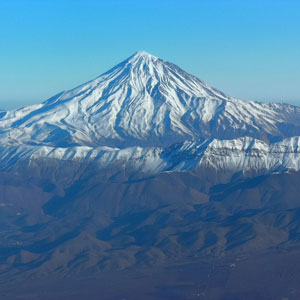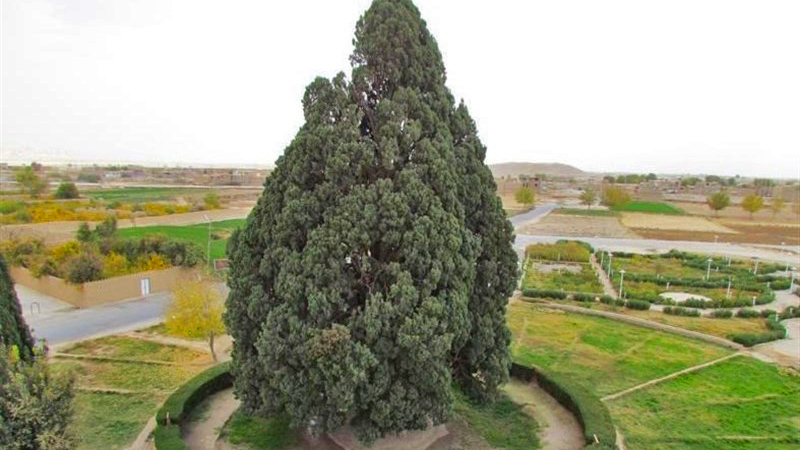 Signin with Google
Signin with Google Signin with Facebook
Signin with Facebook Nature
NatureAbarkuh Cypress, as Old as History

With near 4,500 years, it is one of the oldest living creatures in the world. Passing so many years of history, this cypress tree stayed tall and steady in the hearth of Iran. Sarv-e Abarkuh is an amazing living being with unique characteristics that made it worldwide fame among both tourists and botanists.
Abarkuh, home of the oldest tree of Asia
The cypress tree or as Persian call it "Sarv" spread its roots along with the deserts of Iran, in the historic city of Abarkuh or Abarqu. Getting the name of this old city, Sarv-e Abarkuh has survived for thousands of years. Along 80,000-year-old Pando, 13,000-year-old Jurupa Oak, and 5,000-year-old Great Basin bristlecone pine, Sarv-e Abarkuh is one of the oldest living trees around the world and the oldest one in Asia. This natural wonder is a Mediterranean type. With a height of 25 meters, trunk width of 11.5 meters and a circumference of 18 meters around the branches, this tree surprises every visitor.
Grow in the middle of a barren landscape; Sarv-e Abarkuh uses a nearby Qanat, an underground water channel, to live. This evergreen tree is slow-growing and blooms in the middle of spring.
The undeniable presence of cypress in Iranian culture
The prominent role of the cypress in ancient Iranian culture is so deep. For Iranians, the cypress is the tree of life, a symbol of immortality and beauty. This evergreen tree could be seen in fabrics, carvings and painting. Persepolis petroglyphs perfectly show the importance of cypress in Persian culture since the Achaemenid times. Persian carpets and miniature paintings also manifest the significant value of this evergreen tree. Botte Jeghe is the converted form of cypress, which is the main repeatable motif of Termeh, the most luxurious Iranian handwoven fabric.
Apart from that, Persian poetry is another demonstration of the great role of this ancient tree for Iranians. It is the symbol of beauty, strength and freedom. Hafez, Molana (Rumi) and Saadi used this term as a metaphor to describe their beloved as a cypress for being lofty, flawless in symmetrical shape and tenderness.
Your beautiful face is carved on my heart and soul
I will never forget you, oh my cypress tree
Cypress trees also are essential elements of Persian gardens. They were planted around the garden to specify the area. The most charming type of cypress is in Eram Garden, Shiraz. They are called Sarv- e Naz for the perfect and soaring shape.
Sarv-e Abarkuh, a tree planted by a prophet
This mysterious cypress tree has a special place in Iranian mythology. People believe that Zoroaster, the prophet, had planted this special tree. So it is also known as the Tree of Zoroaster.
In another story, this tree relates to Japheth, the son of Noah, the prophet. It is said that Japheth planted the cypress tree after that great storm.
According to these interesting stories, this cypress is under the spell of eternity, and it will live for so many years. People respect Sarv-e Abarkuh and strongly believe that this tree makes their wishes come true. So they used to tie colourful ribbons to the branches of the tree and believed that when the ferries and good spirits untie the ribbon, their wishes would come true.
Abarkuh, city of wonders
Besides this natural attraction, Abarkuh is an attractive city for its urban attractions. This historic city once saw prosperous days as it was located on the ancient trade road, the Silk Road.
There is a good deal of elegant adobe architecture with eye-catching windcatchers in this city. One of the most famous ones is the wind catchers of Aghazadeh Historical House. The drawing of these pair of amazing wind catchers beautified the Iranian banknotes.
A huge adobe Ice-house is another attraction of Abarkuh. This 12-meter tall circular building was a brilliant invention to keep ice. People have used this structure since the Qajar era, long before the refrigerators were invented to store ice and snow for long summer days.
Since Abarkuh is located in the desert region with hot and dry weather, late September to March is the best time to travel to this city and visit the iconic cypress tree as well as other attractions.
By Samaneh Zohrabi / TasteIran



